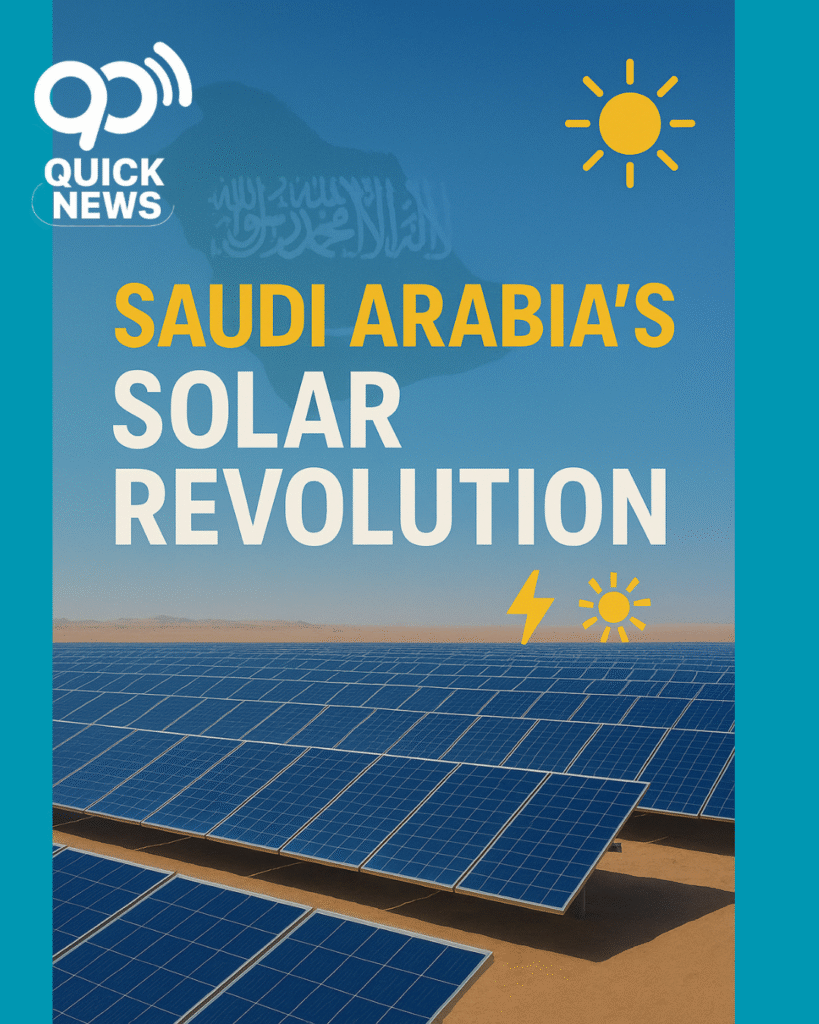Saudi Arabia, long known as the world’s oil capital, is rapidly transforming its energy landscape by investing heavily in solar power. In a groundbreaking move, the Kingdom is carpeting its deserts with solar panels, marking a bold shift from its fossil fuel legacy toward a cleaner, more sustainable future.
According to The Wall Street Journal and reports from Reuters, this pivot is driven by both environmental responsibility and strong economic logic. Solar energy, once costly and unreliable, has now become one of the cheapest and fastest-deploying energy sources globally—making it an ideal solution for Saudi Arabia’s surging electricity demands.
At the heart of this strategy is an ambitious goal: generate 50% of the Kingdom’s electricity from renewable sources by 2030. Flagship projects like the 1.5GW Sudair Solar Project, led by ACWA Power and backed by the Public Investment Fund (PIF), are already transforming the region’s energy sector. Saudi Arabia’s installed solar capacity has soared from 2,585MW in 2023 to 4,340MW in 2024, with multiple utility-scale projects under development by global players such as TotalEnergies and EDF.
The Kingdom’s broader renewable energy target aims for 130GW of solar and wind capacity by 2030, in alignment with its Vision 2030 economic diversification agenda. Recent auctions have offered electricity at record-low prices—below 1.3 cents per kilowatt-hour—making solar power even cheaper than oil-generated electricity. By replacing oil-fired power plants, Saudi Arabia could conserve billions in crude oil exports, boost revenue, and significantly cut carbon emissions.
However, challenges remain. Harsh desert conditions, such as extreme heat and dust, can reduce panel efficiency, while integrating intermittent solar energy into the grid requires heavy investment in storage and transmission systems.
Despite these hurdles, Saudi Arabia’s leadership is committed. As highlighted by The Wall Street Journal and Al Jazeera, renewable energy is not a symbolic gesture but a cornerstone of the Kingdom’s future energy economy. By fostering public-private partnerships, developing local manufacturing, and expanding workforce capacity, the Kingdom is reengineering its energy ecosystem.
Saudi Arabia’s shift from oil to solar is reshaping the Middle East’s energy dynamics—and the world is watching as the Kingdom turns sunlight into its new source of power and prosperity.



